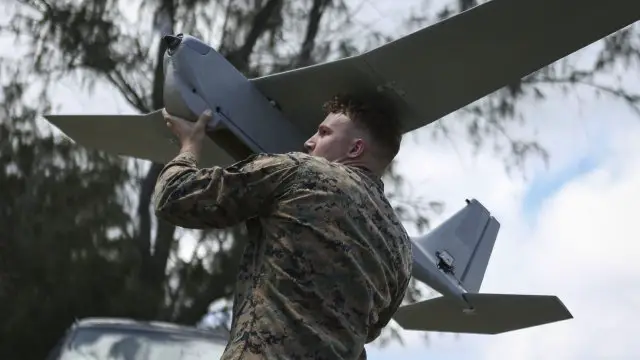|
|
|||
|
Defense & Security News - USA
|
|||
|
|
|||
|
US Marines have tested the RQ-20 Puma Unmanned Aerial System in Hawaii
|
|||
|
The Puma provides land-based and maritime intelligence surveillance and reconnaissance. It also allows small units the ability to detect improvised explosive devices, according to www.navair.navy.mil. The Marine Corps introduced the Puma to its operating units in 2012.
|
|||
|
|
|||
 RQ-20 Puma UAS (credit: Lance Cpl. Matthew Kirk)
|
|||
|
|
|||
|
Schmitt said the system can benefit the battalion in many ways. The Puma can scan an area 360 degrees using a lightweight, electro-optical and infrared camera located on the bottom of the device. “The Puma has day and night vision capabilities,” Schmitt said. “If we’re in a convoy to the next point, we can put the bird up, and advance our convoy and make sure we’re not walking into an ambush.” Schmitt said it will improve their ability to get accurate fires out faster.
The Puma has a maximum altitude of 10,500 feet above sea level and an operational altitude of 500 feet above sea level. The Puma have an overall lenght of 1,4m with a wingspan of 2,8m. Maximum take-off weight is 5,9 kg. the Puma can fly to a speed of 83 km/h out to a range of 15 km. Maximum flight time is about two hours. “It has two different flight modes: manual and autonomous,” “I’ll fly it manually and switch it to autonomous mode which from there I can set different waypoints.” said Cpl. Martin Decos, an intelligence specialist |
|||
- Posted On















